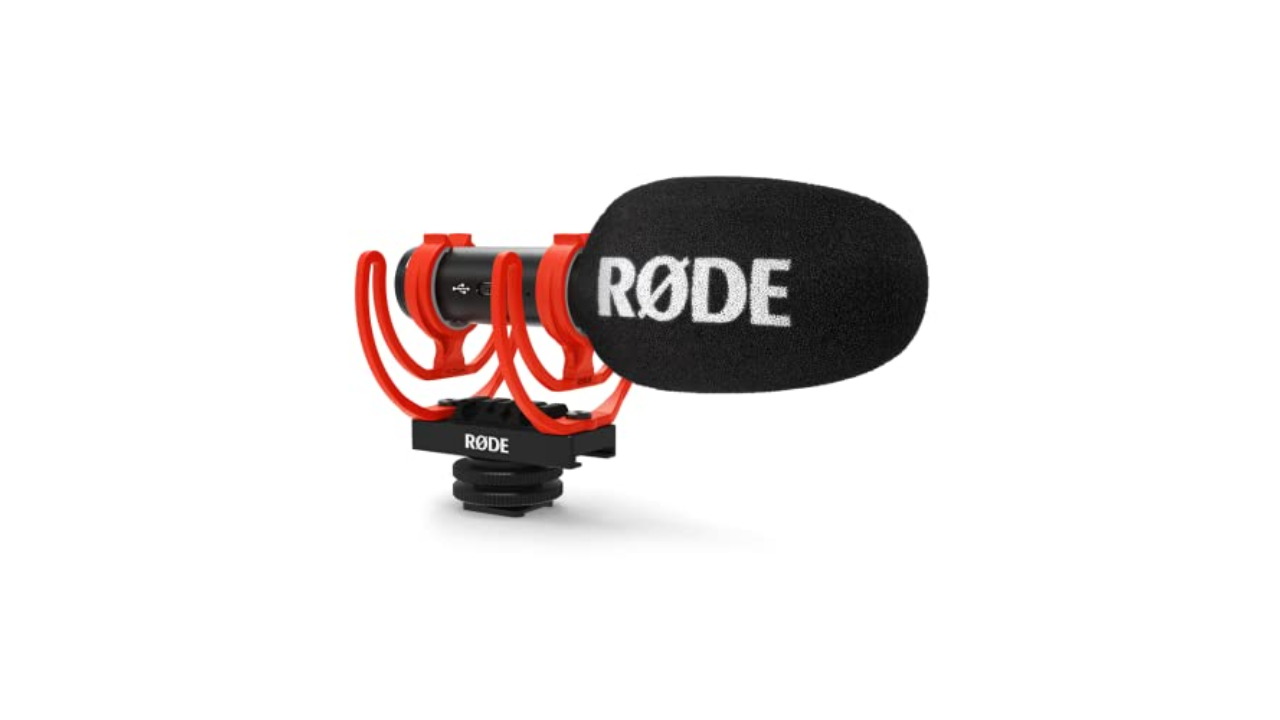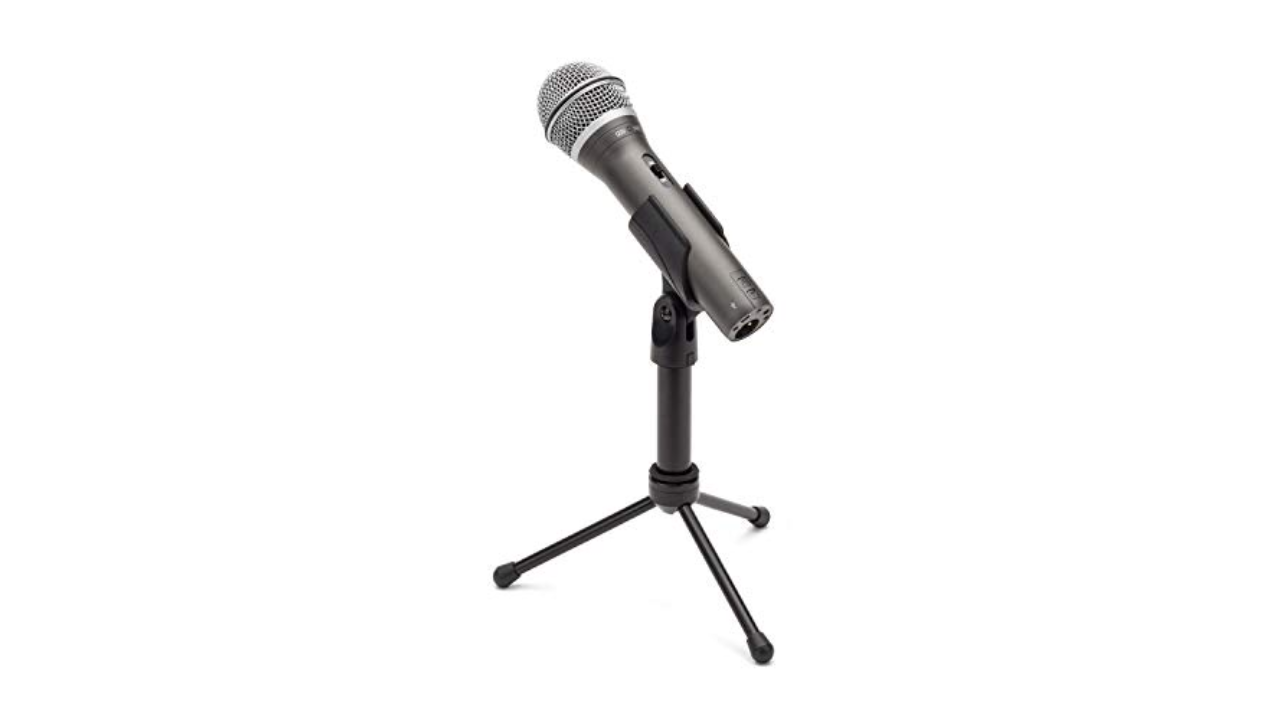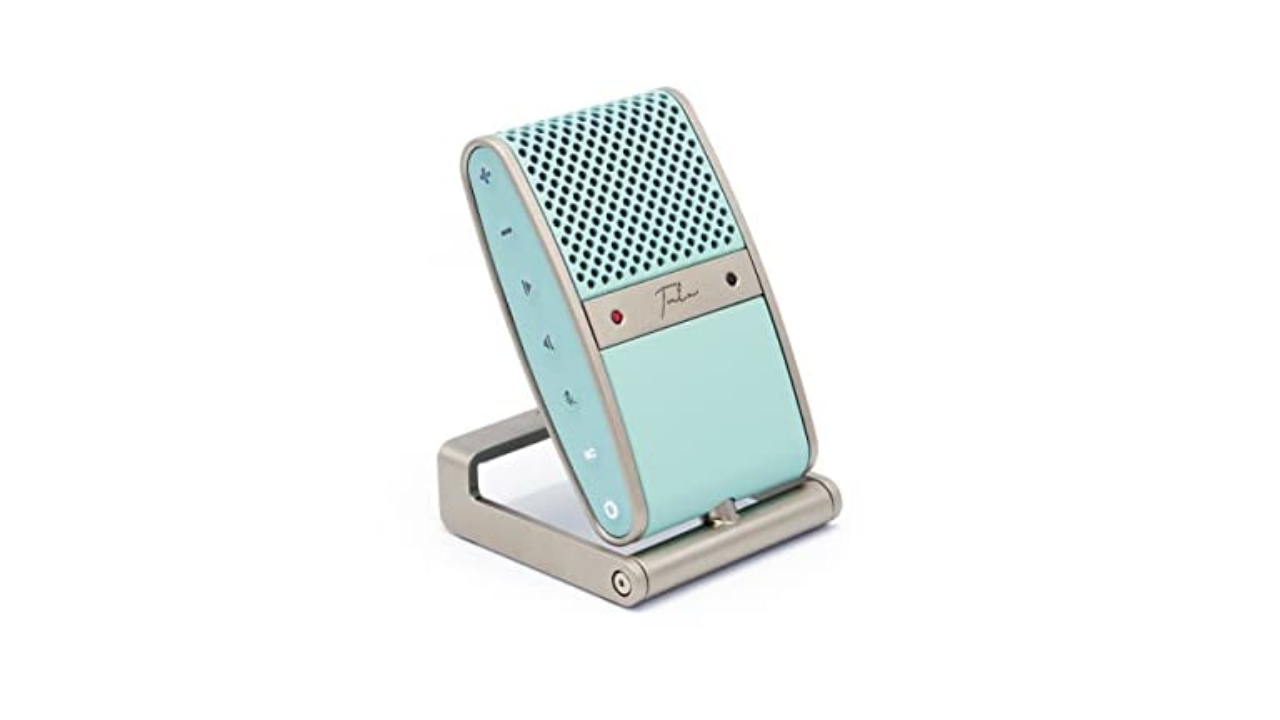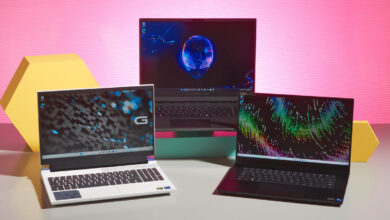
If you consider yourself a mobile creator and you’re not using some sort of dedicated microphone, you might be holding yourself back. We’re not judging, but your audience likely is. Audio, especially dialog, is often overlooked, but you need good sound quality if you want your content to stand out. There are many, many options for the home or office/studio, but there are a surprising amount of mobile-specific (or at least, mobile-friendly) solutions out there to elevate your on-the-go recordings be that for social, a jam session, live streaming, making movies, podcasting and beyond.
Quick Overview
-
Rode Lavalier II
Best 3.5mm mic
-
Sennheiser Pro Audio Condenser Microphone, XS Lav USB-C (509261),Black
Best USB-C mic
-
Rode VideoMic GO II Camera-Mount Lightweight Directional Microphone,Black
Best budget shotgun mic
-
IK Multimedia iRig Stream Mic Pro
Best for multi-platform creators
-
Samson Technologies Q2U USB/XLR Dynamic Microphone Recording and Podcasting Pack (Includes Mic Clip, Desktop Stand, Windscreen and Cables), silver
A good desktop option
-
Tula Mics USB C Microphone – Mobile Recording Microphone for Podcasts, Zoom, Home Studio & More – Portable, Noise Reducing External Microphone with Flip Stand – iOS/Android, Mac & PC Mic
A good desktop option
-
Audigo
Best for musicians on the go
-
CEntrance MicPort Pro 3
Best for journalists and field recording
-
Shure MVX2U
A cheaper field recording option
What “the best mic for iOS or Android” is will vary depending on the task you need it for. If you want to record a TikTok or a podcast or even a jam session, all have slightly different needs but the selection below covers most bases (and maybe even a few you didn’t think of yet) for recording high-quality sound with little more than a mobile phone.
This guide is all about recording audio on the go, free from the constraints of a studio or office, but also far away from luxuries like power outlets, acoustically friendly rooms and a full-size PC. As such there are two styles of external mic that really shine here: Lavalier (lapel) and shotgun. We’ll be covering a few other types, too, but between those, most tasks are covered.
We’ll also show you how you can use the USB mics you may already have with your phone and even ways to connect heavy-duty studio classics (XLR) to your humble handset, but all that will be through accessories. For now, let’s start with the classic clip mics.
Lavalier mics
The obvious benefit of a lapel microphone is size. Their small profile makes them perfect for presenting to the camera with the flexibility to move around while maintaining consistent audio quality. If you’re a budding TikTok or vlogger it’s definitely worth having one of these mini microphones in your bag.
The main trade-off, however, is that they’re only good for recording the person they’re attached to. If you have two people talking and only one is wearing the mic, you’ll only get good audio for one half of the conversation, so for multi-person recordings you’ll need a mic for each guest and a way to record them at the same time, so costs can go up quickly.
Fortunately, lapel mics have become a very competitive market with good, viable options costing as little as $14.95. For an absolute bargain with a long cord and some connectivity accessories, the Boya BY M1 is hard to argue with. But, while these budget choices are great value, if you want something that should either last longer, is more versatile or just sounds better it’s worth paying a little bit more.
Rode’s Lavalier II is a slick-looking low-profile lavalier that sounds great. At $99, it’s somewhere in the sweet spot between budget and higher-end clip-on options. It’s easy to recommend the Lavalier II just on its sound alone, but it comes with a rugged case and a good selection of accessories. For even more flexibility you can pair this with Rode’s AI Micro interface ($79) which provides easy connection to an iPhone or Android phone (or even PCs) and adds support for a second mic – perfect for recording podcasts or interviews.
At $60, Sennheiser’s XS (USB-C) lav mic is fairly affordable, sounds great and plugs right into your phone (or laptop) without needing an adapter. This not only makes it convenient but reduces the overall cost as you don’t need a headphone adapter for your phone. What’s more, the XS has a 2-meter long cable which gives you plenty of scope for movement or framing.
A word on wireless mic
Recently there has been an explosion in mobile-friendly wireless mic systems, but there’s one wireless mic we really like. DJI’s Mic 2 system provides some important upgrades from its predecessor. Notably, it can connect directly to your smartphone via Bluetooth, and it sports improved AI noise reduction and a bigger touchscreen.
Adapters
So we’ve already touched on this with the AI Micro, which is an adapter of sorts. One of the first things you might bump up against when dealing with mobile audio accessories is TRRS vs TRS connectors. Simply put, 3.5mm TRS is what you might know as the age-old classic headphone jack while TRRS became common for its support for headsets and inline mics. You can easily tell them apart as TRS connectors have two black bands on them while a TRRS has three.
For you, the budding creator, it can be a bit of an annoyance as many 3.5mm lavaliers are going to be TRS and won’t work when plugged into your phone’s headphone adapter. Sometimes your lavalier might include what you need in the box, but otherwise, you’ll want to pick up a TRS to TRRS adapter like this. Of course, some smartphone-specific mics have TRRS connectors already – for those, you’ll want a cable that goes the other way should you want to use it with other devices like a DSLR.
Shotgun mics
You may be more familiar with shotgun microphones when it comes to video recording. It’s the style of microphone most often found atop a DSLR or mirrorless camera, but they make great companions for other portable devices too, your cell phone included.
The benefit of a shotgun is that they tend to be highly directional, which makes them perfect for podcasts, recording instruments, foley sounds and much, much more. For us mobile recordists, another benefit is that they tend to be light and portable, perfect for slipping into a backpack or even a laptop bag. Even better, there are some great mobile-specific options.
When we tested the VideoMic GO II we were surprised at just how good it sounded right out of the box. At $100 it rivals many desktop microphones that cost three times the price. You’ll need a companion app to change settings, otherwise this performs well across the board.
Desktop and USB mics go mobile
Mobile-specific mics are great, but there’s nothing stopping you from using your phone mic or another you might already have (if it’s somewhat portable). You’ll definitely need to do a little dance with some adapters, but that’s half the fun. Below are a couple of recommendations for “regular” microphones that pair well with a phone and then the cables and adapters that you’ll need to get setup.
If there was an audio “penknife” then the iRig Stream Mic Pro may well be it. It’s a chunky condenser microphone, but you can connect instruments or even other mics to it via a 3.5mm input. If you have background music on your phone or PC, you can also pipe that into the mix via a loopback mode. In short, whether you’re busking, podcasting or performing on the go, the Stream Mic Pro has all the core features you need to turn a basic recording into a professional one.
Mobile connectivity is a primary feature with options for Lightning and USB-C/Android included in the box. The mic itself offers four polar patterns that should cover most recording scenarios —- be that recording a singer, two people speaking face to face or the general ambience around you. The Stream Mic Pro might not be the most pocketable on this list, but it’s likely the most versatile.
This dynamic mic is a favorite with podcasters, with many production companies using it as their standard mic to send out to remote guests thanks to its excellent quality to value performance. The Q2U features both USB and XLR connectivity making it versatile for both desktop and mobile applications, but it’s the former we’re interested in here as that’s what allows you to connect it to your phone with nothing more than a USB cable and an adapter (see below).
What’s more, the Q2U is solid enough to endure a little bit of rough and tumble, so will happily live in the bottom of your backpack ready for when you need it. Meanwhile, the handheld design is versatile enough it can turn its hand to singing/instruments, podcasts, interviews and more.
You may not be familiar with the name, but Tula snuck into our hearts with its versatile, vintage inspired debut microphone. From a mobile perspective, the Tula connects to Androids directly over USB-C or iPhones with the right USB-C to Lightning cable (more on this below) or a USB “camera kit” adapter. What makes the Tula special is that it’s also a desktop mic and portable recorder with lavalier input and 8GB of storage and even features noise cancellation – perfect for cutting down on outside background sounds. With the Tula you could theoretically have one mic for home, mobile and standalone recording.
A word on cables
Connecting USB microphones directly to phones is rarely as simple as just one cable, although that’s starting to become more common. In general, Android makes this simpler, but also, thanks to the wide range of manufacturers and software versions you can’t always guarantee things will work smoothly.
The iPhone is a whole other situation. USB microphones have a good chance of working via the USB camera kit we mentioned earlier, but that’s still inelegant sometimes. Frustratingly, some USB-C to Lightning cables will play nice with microphones, but sadly most will not – including Apple’s own. One confirmed option is this cable from Fiio or this generic alternative. These are inexpensive enough that it’s worth having a couple around if you work with audio a lot (they of course can also be used to charge your phone as a bonus).
Other mobile microphones to consider
Most of the microphones in this guide will do a decent job of recording musical performances, but some are specifically built for it. Founded in 2019, Audigo puts artists and performers front and center. At time of writing, it only offers one model and all its focus goes into that. If you’re a musician on the go, or want something you can keep in your pocket for whenever inspiration strikes, the Audigo might be for you.
The square, puck-like Audigo mic is basically a pocketable rival to iZotope’s (now discontinued) Spire portable studio, right down to the companion app. The Audigo is far more portable than the Spire ever was and you can combine multiple devices for multitrack recording. Once you’ve recorded your track, you can add reverb, delay, equalize and more to give it some polish before exporting it out to your preferred platform. There’s a video mode, too, so it’s perfect for sharing edits to TikTok and Instagram.
The mic requires the app (iOS only for now) to work, which is not ideal and we’d love to be able to use it over USB to extend its functionality, but for performers on the move Audiogo offers features that are hard to find without having to shop around for various different apps.
With the iPhone 15 joining the USB-C family, there are tons of gaming and podcasting microphones that can simply plug straight into your phone. But if you want to use almost any pro microphone for recording field interviews, foley sounds, podcasting on the go and anything for broadcast, then an interface like the Centrance MicPort Pro is a must.
With its XLR-combo connection, the MicPort Pro works with all the broadcast standard microphones like Shure’s SM7B or the Electro Voice RE20 — including mics that need phantom power. Unlike other, cheaper XLR interfaces, there’s practically no self noise (hiss) and there’s a built-in battery that should last for around five hours of field use. You can charge it while in use via a USB-C should you need to.
Centrance has kept things simple, but you will still find important tools like real-time monitoring, a high-pass filter to combat wind or handling noise and there’s even a limiter that should stop any unexpected loud noises from ruining your recording. For shotgun mics, the MicPort Pro can even double as a handle. As mobile as this thing is, it’ll happily serve as a simple audio interface once you’re back in the home office too.
This guide is about mobile recording, and officially, Shure’s MVX2U XLR to USB interface doesn’t support phones. But you know what? It definitely does work with the phones we’ve tried, including several Androids and the iPhone 15. The good news is that it’s half the price of the Centrance. The bad news is that the settings can only be changed via Shure’s desktop app, so if you need to adjust something out in the field, you’re out of luck. Still, it’s a great value option if you can live with its limitations.
Source link











